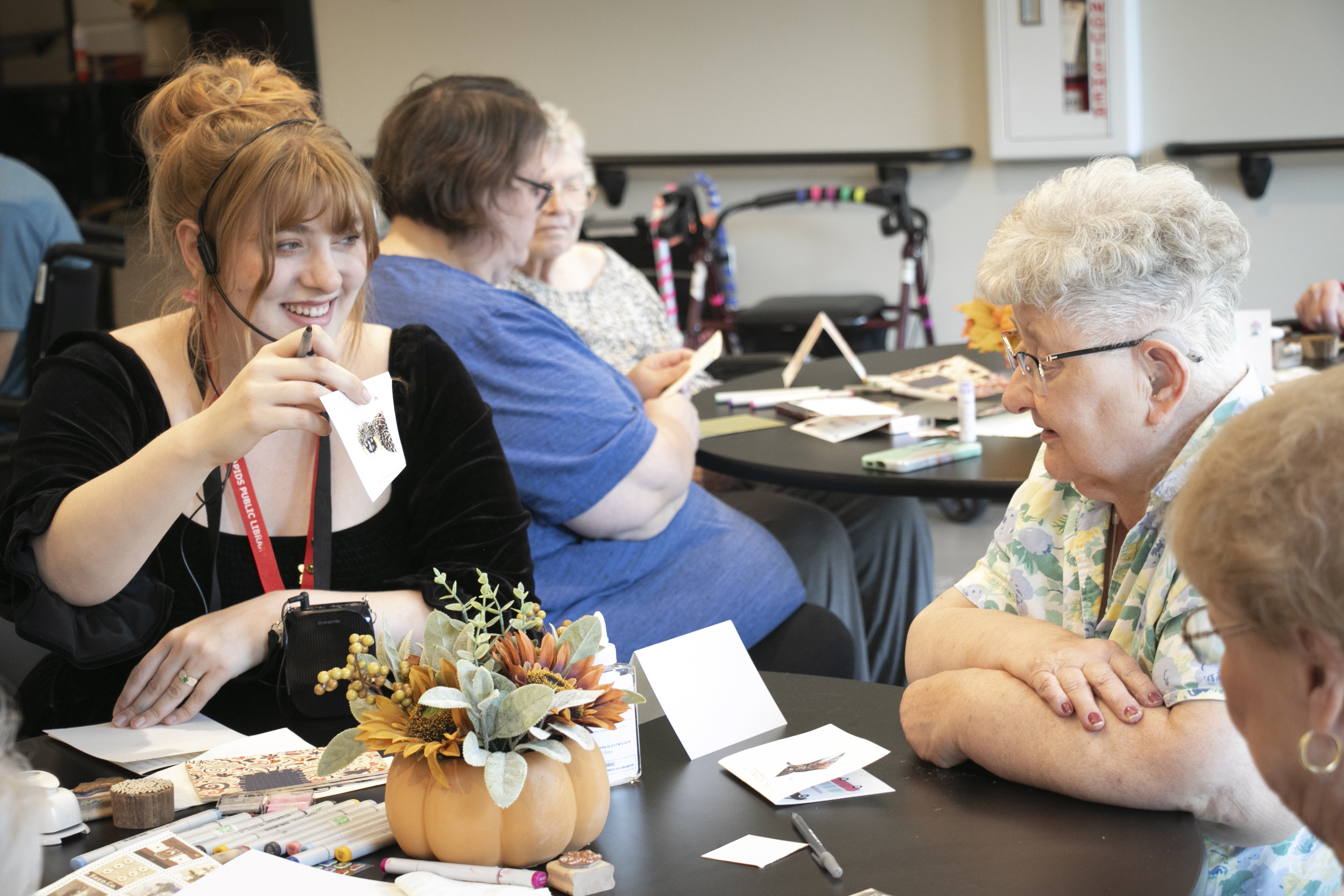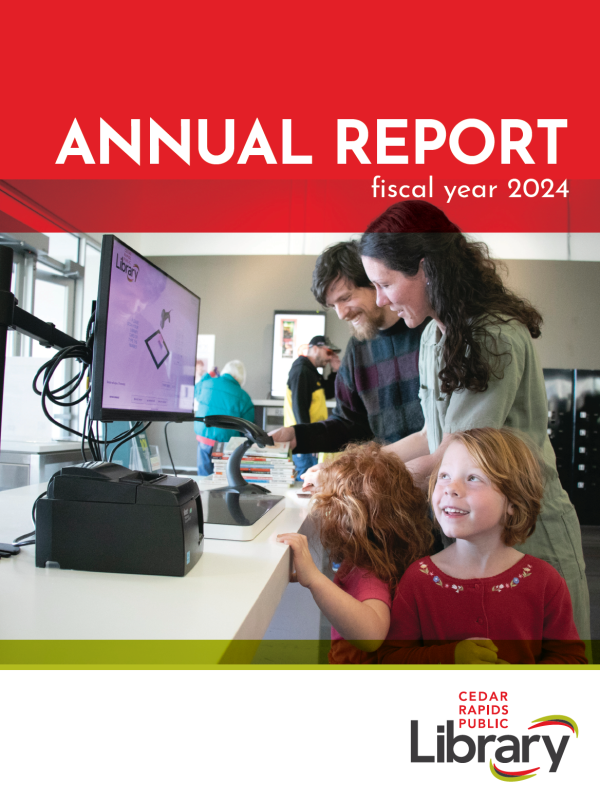
Oct. 14, 2024 – When Programming Specialist Erin Campbell first started visiting residents at The Gardens of Cedar Rapids, a senior living community on Cedar Rapids’ southwest side, one conversation in particular stuck with her.
“It’s good to see you!” she told one man, who lives in the Memory Care unit at The Gardens.
“It’s good to be seen,” he replied.
That interaction is exactly why she wanted to start the two programs she brings to The Gardens each month. She visits Memory Care twice a month for a story time, and once a month she presents “Armchair Travels,” which is open to anyone in the facility. She brings stories, photographs, and artifacts from a different county or destination each month for an interactive presentation.
“It’s bringing a little bit of the world to people who are often forgotten,” she said. “Maybe they can’t get to the library. But they deserve to have library programming.”
Campbell started her outreach efforts with Memory Care at The Gardens a year ago and added Armchair Travels about four months ago. She recently introduced a new element – a partnership with a local preschool and kindergarten class. She hopes to set up a pen pal relationship between the two generations. To get it started, participants at The Gardens created greeting cards to send to the children.
“Have a heart!” one card said, decorated with bright hearts. “Enjoy your day and do good at school,” said another.
“This is from Grandma Bridget. Love you,” another card said, the words surrounded by carefully selected stickers the woman making the card said represented her life: a house, a bicycle, flowers, a small dog.
As the residents decorated their cards, Campbell visited each table, asking the participants for their life advice, which would later be available for people to read at Ladd Library.
Campbell also read a picture book aloud, telling a story of a grandparent’s relationship with his grandchildren. She said she carefully selects her books, hoping to evoke conversation and connection.
“We start talking after we read, and it can be a safe space to talk about difficult things,” she said. “As we tell these stories, their stories can also be told. That’s what books are for. That’s what stories are for.”
It is work like this that happens throughout the year, without much fanfare or praise, that has a lasting impact on the people involved: both the patrons and the staff . This is another example of how our library staff provide access to library resources to those who otherwise would go without.

FY 2024 Annual Report
This story is from the library's FY 2024 Annual Report. Read the entire report and more stories from our year here.